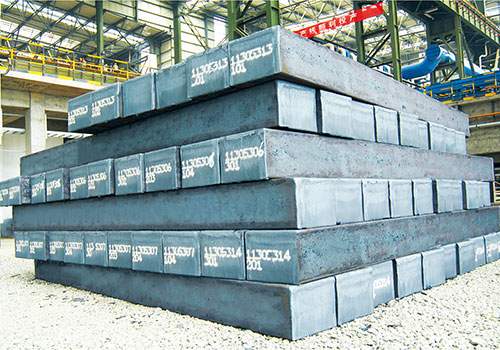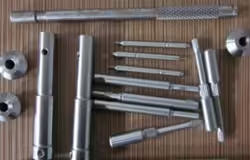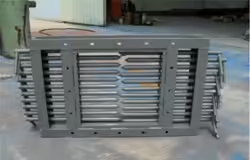
Understanding Steel Q235 Properties
Table of Contents
Introduction

Steel is one of the most widely used materials in construction, manufacturing, and engineering. Among various steel grades, Steel Q235 is one of the most commonly utilized in structural applications, thanks to its reliable performance, strength, and cost-effectiveness. Understanding Steel Q235 properties is essential for industries ranging from construction to machinery manufacturing. This blog explores the composition, mechanical properties, advantages, and applications of Steel Q235, helping you understand why it’s a popular choice in many sectors.
What is Steel Q235?
Composition and Classification of Steel Q235
Steel Q235 is a low-carbon structural steel that is often used in the construction of bridges, buildings, and other structures. It is known for its excellent welding properties, formability, and overall durability. Steel Q235 is often classified based on its yield strength, with Q235 referring to a yield strength of approximately 235 megapascals (MPa).
The typical chemical composition of Steel Q235 includes:
- Carbon (C): 0.12% – 0.20%
- Manganese (Mn): 0.30% – 0.70%
- Silicon (Si): 0.30% max
- Sulfur (S): 0.05% max
- Phosphorus (P): 0.045% max
Key Properties of Steel Q235
The Steel Q235 properties make it a versatile material for various applications. Here are some of its standout features:
- Yield Strength: 235 MPa
- Tensile Strength: 370 – 500 MPa
- Elongation: 21% (in 200mm gauge length)
- Density: 7.85 g/cm³
- Hardness: 125 HB (Brinell Hardness)
Mechanical Properties of Steel Q235
1. Strength and Durability
The Steel Q235 properties provide a good balance between strength and ductility. With a yield strength of 235 MPa, it is strong enough to withstand the pressures and stresses of structural applications, such as in bridges and high-rise buildings. Its tensile strength, which ranges from 370 MPa to 500 MPa, ensures that it can handle various loading conditions without failure.
2. Weldability
One of the most attractive features of Steel Q235 is its excellent weldability. This makes it a preferred choice for construction and manufacturing processes that require welding. The low carbon content allows for the creation of strong weld joints without the risk of cracking or brittleness.
3. Formability
Steel Q235 is also known for its good formability. It can be easily shaped into various forms such as plates, sheets, and bars, making it suitable for a wide range of construction and manufacturing applications. Its ability to be bent or rolled into different shapes without losing structural integrity is another reason for its widespread use.
Applications of Steel Q235
Steel Q235 is used in various industries and applications, ranging from infrastructure to machinery production. Here are some of its most common uses:
1. Construction
In the construction industry, Steel Q235 is often used in the fabrication of steel frames, beams, and columns for buildings, bridges, and other infrastructure. Its good weldability and high strength make it ideal for these structural applications.
2. Manufacturing
In manufacturing, Steel Q235 is used to produce various industrial components, such as equipment frames, machine parts, and automotive parts. Its formability and cost-effectiveness make it a popular choice for production lines.
3. Transport and Automotive
Steel Q235 is used in the automotive industry for the production of parts such as chassis, body panels, and structural components. It is also used in the transportation industry for the construction of railway components and other structural elements.
Comparing Steel Q235 Properties with Other Steel Grades
To further understand the Steel Q235 properties, it helps to compare it with other commonly used steels. Below is a table comparing Steel Q235 with other commonly used steels in terms of their mechanical properties:
| Property | Steel Q235 | Steel Q345 | Steel A36 | Steel 16Mn |
|---|---|---|---|---|
| Yield Strength (MPa) | 235 | 345 | 250 | 250 |
| Tensile Strength (MPa) | 370 – 500 | 470 – 630 | 400 – 550 | 490 – 630 |
| Elongation (%) | 21% | 20% | 20% | 19% |
| Hardness (HB) | 125 | 150 | 140 | 160 |
| Density (g/cm³) | 7.85 | 7.85 | 7.85 | 7.85 |
| Weldability | Excellent | Good | Good | Good |
As seen in the table, Steel Q235 has moderate strength and formability, which makes it ideal for many structural applications. However, when compared with Steel Q345 or 16Mn steel, Q235 is generally considered a more cost-effective option due to its lower yield and tensile strength.
Advantages of Steel Q235


Cost-Effectiveness
One of the key advantages of Steel Q235 is its cost-effectiveness. It provides a balance of strength, durability, and price, making it a go-to material for many industries. Its lower cost compared to higher-grade steels, like Steel Q345, makes it a popular choice in budget-sensitive projects.
Corrosion Resistance
While Steel Q235 is not as corrosion-resistant as stainless steel, it still provides adequate resistance to corrosion when properly treated or coated. For applications where the steel will be exposed to moisture, it is often treated with a protective coating to prevent rust and deterioration.
Easy Availability
Another advantage of Steel Q235 is its wide availability. As a common steel grade used in construction and manufacturing, Steel Q235 is easy to source, and manufacturers produce it in various sizes and shapes to suit different applications.
Conclusion
Steel Q235 is an essential material in construction, manufacturing, and various industrial applications due to its favorable properties, including good weldability, formability, and cost-effectiveness. Its moderate strength makes it suitable for a wide range of applications, while its availability and ease of use make it a reliable choice for many projects. By understanding Steel Q235 properties, engineers and manufacturers can make informed decisions about the materials that best suit their needs, ensuring safety, durability, and efficiency in their constructions and products.
FAQ
What Is the Difference Between Steel Q235 and Q345?
The primary difference between Steel Q235 and Q345 is their yield strength. Steel Q345 has a higher yield strength (345 MPa) compared to Steel Q235 (235 MPa), making Steel Q345 more suitable for heavy-duty applications where higher strength is required.
Can Steel Q235 Be Used for Welding?
Yes, Steel Q235 has excellent weldability, making it ideal for use in welding applications. It is commonly used in the construction of steel structures where welding is required.
Is Steel Q235 Corrosion-Resistant?
Steel Q235 provides moderate corrosion resistance. It is commonly used for construction and manufacturing, but for outdoor or marine applications, additional protective coatings are often applied to prevent rust.
What Are the Advantages of Steel Q235 Over Other Steels?
The main advantages of Steel Q235 are its cost-effectiveness, good weldability, and adequate strength for most structural applications. It is a versatile material suitable for a wide range of industries.
Can Steel Q235 Be Used in Extreme Weather Conditions?
While Steel Q235 performs well in moderate conditions, it may require additional protective coatings or alloying for use in extreme weather conditions or corrosive environments.






